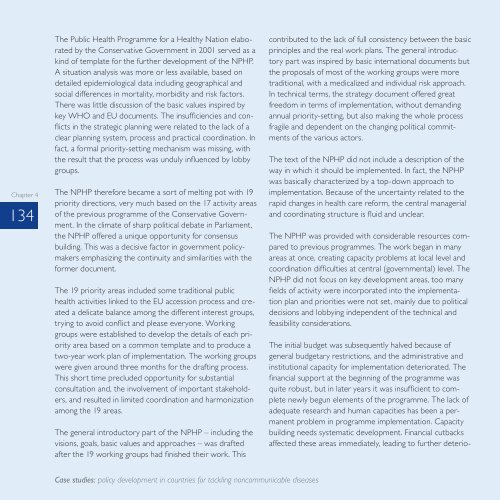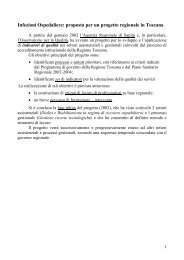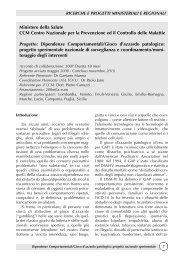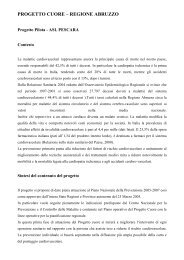Gaining health : analysis of policy development in European ...
Gaining health : analysis of policy development in European ...
Gaining health : analysis of policy development in European ...
You also want an ePaper? Increase the reach of your titles
YUMPU automatically turns print PDFs into web optimized ePapers that Google loves.
Chapter 4<br />
134<br />
The Public Health Programme for a Healthy Nation elaborated<br />
by the Conservative Government <strong>in</strong> 2001 served as a<br />
k<strong>in</strong>d <strong>of</strong> template for the further <strong>development</strong> <strong>of</strong> the NPHP.<br />
A situation <strong>analysis</strong> was more or less available, based on<br />
detailed epidemiological data <strong>in</strong>clud<strong>in</strong>g geographical and<br />
social differences <strong>in</strong> mortality, morbidity and risk factors.<br />
There was little discussion <strong>of</strong> the basic values <strong>in</strong>spired by<br />
key WHO and EU documents. The <strong>in</strong>sufficiencies and conflicts<br />
<strong>in</strong> the strategic plann<strong>in</strong>g were related to the lack <strong>of</strong> a<br />
clear plann<strong>in</strong>g system, process and practical coord<strong>in</strong>ation. In<br />
fact, a formal priority-sett<strong>in</strong>g mechanism was miss<strong>in</strong>g, with<br />
the result that the process was unduly <strong>in</strong>fluenced by lobby<br />
groups.<br />
The NPHP therefore became a sort <strong>of</strong> melt<strong>in</strong>g pot with 19<br />
priority directions, very much based on the 17 activity areas<br />
<strong>of</strong> the previous programme <strong>of</strong> the Conservative Government.<br />
In the climate <strong>of</strong> sharp political debate <strong>in</strong> Parliament,<br />
the NPHP <strong>of</strong>fered a unique opportunity for consensus<br />
build<strong>in</strong>g. This was a decisive factor <strong>in</strong> government <strong>policy</strong>makers<br />
emphasiz<strong>in</strong>g the cont<strong>in</strong>uity and similarities with the<br />
former document.<br />
The 19 priority areas <strong>in</strong>cluded some traditional public<br />
<strong>health</strong> activities l<strong>in</strong>ked to the EU accession process and created<br />
a delicate balance among the different <strong>in</strong>terest groups,<br />
try<strong>in</strong>g to avoid conflict and please everyone. Work<strong>in</strong>g<br />
groups were established to develop the details <strong>of</strong> each priority<br />
area based on a common template and to produce a<br />
two-year work plan <strong>of</strong> implementation. The work<strong>in</strong>g groups<br />
were given around three months for the draft<strong>in</strong>g process.<br />
This short time precluded opportunity for substantial<br />
consultation and, the <strong>in</strong>volvement <strong>of</strong> important stakeholders,<br />
and resulted <strong>in</strong> limited coord<strong>in</strong>ation and harmonization<br />
among the 19 areas.<br />
The general <strong>in</strong>troductory part <strong>of</strong> the NPHP – <strong>in</strong>clud<strong>in</strong>g the<br />
visions, goals, basic values and approaches – was drafted<br />
after the 19 work<strong>in</strong>g groups had f<strong>in</strong>ished their work. This<br />
contributed to the lack <strong>of</strong> full consistency between the basic<br />
pr<strong>in</strong>ciples and the real work plans. The general <strong>in</strong>troductory<br />
part was <strong>in</strong>spired by basic <strong>in</strong>ternational documents but<br />
the proposals <strong>of</strong> most <strong>of</strong> the work<strong>in</strong>g groups were more<br />
traditional, with a medicalized and <strong>in</strong>dividual risk approach.<br />
In technical terms, the strategy document <strong>of</strong>fered great<br />
freedom <strong>in</strong> terms <strong>of</strong> implementation, without demand<strong>in</strong>g<br />
annual priority-sett<strong>in</strong>g, but also mak<strong>in</strong>g the whole process<br />
fragile and dependent on the chang<strong>in</strong>g political commitments<br />
<strong>of</strong> the various actors.<br />
The text <strong>of</strong> the NPHP did not <strong>in</strong>clude a description <strong>of</strong> the<br />
way <strong>in</strong> which it should be implemented. In fact, the NPHP<br />
was basically characterized by a top-down approach to<br />
implementation. Because <strong>of</strong> the uncerta<strong>in</strong>ty related to the<br />
rapid changes <strong>in</strong> <strong>health</strong> care reform, the central managerial<br />
and coord<strong>in</strong>at<strong>in</strong>g structure is fluid and unclear.<br />
The NPHP was provided with considerable resources compared<br />
to previous programmes. The work began <strong>in</strong> many<br />
areas at once, creat<strong>in</strong>g capacity problems at local level and<br />
coord<strong>in</strong>ation difficulties at central (governmental) level. The<br />
NPHP did not focus on key <strong>development</strong> areas, too many<br />
fields <strong>of</strong> activity were <strong>in</strong>corporated <strong>in</strong>to the implementation<br />
plan and priorities were not set, ma<strong>in</strong>ly due to political<br />
decisions and lobby<strong>in</strong>g <strong>in</strong>dependent <strong>of</strong> the technical and<br />
feasibility considerations.<br />
The <strong>in</strong>itial budget was subsequently halved because <strong>of</strong><br />
general budgetary restrictions, and the adm<strong>in</strong>istrative and<br />
<strong>in</strong>stitutional capacity for implementation deteriorated. The<br />
f<strong>in</strong>ancial support at the beg<strong>in</strong>n<strong>in</strong>g <strong>of</strong> the programme was<br />
quite robust, but <strong>in</strong> later years it was <strong>in</strong>sufficient to complete<br />
newly begun elements <strong>of</strong> the programme. The lack <strong>of</strong><br />
adequate research and human capacities has been a permanent<br />
problem <strong>in</strong> programme implementation. Capacity<br />
build<strong>in</strong>g needs systematic <strong>development</strong>. F<strong>in</strong>ancial cutbacks<br />
affected these areas immediately, lead<strong>in</strong>g to further deterio-<br />
Case studies: <strong>policy</strong> <strong>development</strong> <strong>in</strong> countries for tackl<strong>in</strong>g noncommunicable diseases

















